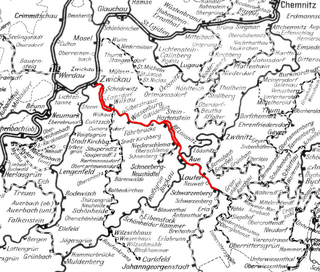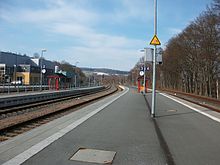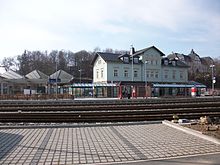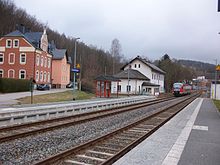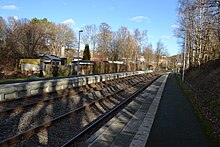Schwarzenberg – Zwickau railway line
| Schwarzenberg (Erzgeb) –Zwickau (Sachs) central station | |||||||||||||||||||||||||||||||||||||||||||||||||||||||||||||||||||||||||||||||||||||||||||||||||||||||||||||||||||||||||||||||||||||||||||||||||||||||||||||||||||||||||||||||||||||||||||||||||||||||||||||||||
|---|---|---|---|---|---|---|---|---|---|---|---|---|---|---|---|---|---|---|---|---|---|---|---|---|---|---|---|---|---|---|---|---|---|---|---|---|---|---|---|---|---|---|---|---|---|---|---|---|---|---|---|---|---|---|---|---|---|---|---|---|---|---|---|---|---|---|---|---|---|---|---|---|---|---|---|---|---|---|---|---|---|---|---|---|---|---|---|---|---|---|---|---|---|---|---|---|---|---|---|---|---|---|---|---|---|---|---|---|---|---|---|---|---|---|---|---|---|---|---|---|---|---|---|---|---|---|---|---|---|---|---|---|---|---|---|---|---|---|---|---|---|---|---|---|---|---|---|---|---|---|---|---|---|---|---|---|---|---|---|---|---|---|---|---|---|---|---|---|---|---|---|---|---|---|---|---|---|---|---|---|---|---|---|---|---|---|---|---|---|---|---|---|---|---|---|---|---|---|---|---|---|---|---|---|---|---|---|---|---|
|
Excerpt from the route map of Saxony 1902
| |||||||||||||||||||||||||||||||||||||||||||||||||||||||||||||||||||||||||||||||||||||||||||||||||||||||||||||||||||||||||||||||||||||||||||||||||||||||||||||||||||||||||||||||||||||||||||||||||||||||||||||||||
| Route number : | 6264; sä. SZ | ||||||||||||||||||||||||||||||||||||||||||||||||||||||||||||||||||||||||||||||||||||||||||||||||||||||||||||||||||||||||||||||||||||||||||||||||||||||||||||||||||||||||||||||||||||||||||||||||||||||||||||||||
| Course book section (DB) : | 535 | ||||||||||||||||||||||||||||||||||||||||||||||||||||||||||||||||||||||||||||||||||||||||||||||||||||||||||||||||||||||||||||||||||||||||||||||||||||||||||||||||||||||||||||||||||||||||||||||||||||||||||||||||
| Route length: | 38.132 km | ||||||||||||||||||||||||||||||||||||||||||||||||||||||||||||||||||||||||||||||||||||||||||||||||||||||||||||||||||||||||||||||||||||||||||||||||||||||||||||||||||||||||||||||||||||||||||||||||||||||||||||||||
| Gauge : | 1435 mm ( standard gauge ) | ||||||||||||||||||||||||||||||||||||||||||||||||||||||||||||||||||||||||||||||||||||||||||||||||||||||||||||||||||||||||||||||||||||||||||||||||||||||||||||||||||||||||||||||||||||||||||||||||||||||||||||||||
| Route class : | CM4 | ||||||||||||||||||||||||||||||||||||||||||||||||||||||||||||||||||||||||||||||||||||||||||||||||||||||||||||||||||||||||||||||||||||||||||||||||||||||||||||||||||||||||||||||||||||||||||||||||||||||||||||||||
| Maximum slope : | 12.5 ‰ | ||||||||||||||||||||||||||||||||||||||||||||||||||||||||||||||||||||||||||||||||||||||||||||||||||||||||||||||||||||||||||||||||||||||||||||||||||||||||||||||||||||||||||||||||||||||||||||||||||||||||||||||||
| Minimum radius : | 170 m | ||||||||||||||||||||||||||||||||||||||||||||||||||||||||||||||||||||||||||||||||||||||||||||||||||||||||||||||||||||||||||||||||||||||||||||||||||||||||||||||||||||||||||||||||||||||||||||||||||||||||||||||||
| Top speed: | 80 km / h | ||||||||||||||||||||||||||||||||||||||||||||||||||||||||||||||||||||||||||||||||||||||||||||||||||||||||||||||||||||||||||||||||||||||||||||||||||||||||||||||||||||||||||||||||||||||||||||||||||||||||||||||||
| Dual track : | Schlema unt Bf – Zwickau (Sachs) Hbf | ||||||||||||||||||||||||||||||||||||||||||||||||||||||||||||||||||||||||||||||||||||||||||||||||||||||||||||||||||||||||||||||||||||||||||||||||||||||||||||||||||||||||||||||||||||||||||||||||||||||||||||||||
|
|||||||||||||||||||||||||||||||||||||||||||||||||||||||||||||||||||||||||||||||||||||||||||||||||||||||||||||||||||||||||||||||||||||||||||||||||||||||||||||||||||||||||||||||||||||||||||||||||||||||||||||||||
The Schwarzenberg – Zwickau railway is a main line in Saxony that was originally built and operated by the Saxon state as the Upper Ore Mountains State Railway . It runs in the valleys of Schwarzwasser and Zwickauer Mulde from Schwarzenberg / Erzgeb. via Aue to Zwickau . The line has been part of the DB region network Erzgebirgsbahn since 2001 .
history
Zwickau – Bockwa State Coal Railway
The connection Schwarzenberg – Zwickau has its origin in the coal railway Zwickau – Bockwa, also "Staatskohlenbahn Zwickau-Kainsdorf", which was built as a state railway in 1854 in order to improve the sales of the Zwickau hard coal.
The extension to Schwarzenberg
In the middle of the 19th century there was great poverty in the Upper Ore Mountains. The profitable mining of silver and other precious ores, which had been practiced for centuries, was in constant decline. In this situation, the Schwarzenberg mayor Friedrich Gustav Weidauer and the chief miner Friedrich Constantin von Beust demanded the construction of a railway into the upper Western Ore Mountains in 1854. As early as 1852, Beust had advertised the construction of a railway as a means against the decay of the iron industry with a publication entitled The railway connection between Zwickau and the Upper Ore Mountains. One proposal was to build a railway from Chemnitz through the Zwönitztal to Schwarzenberg and further along the Zwickauer Mulde to Zwickau, which would have connected the Chemnitz-Riesa Railway with the Saxon-Bavarian Railway . The connection between the two railways was then implemented as the Niedererzgebirge State Railroad via Glauchau.
On August 7, 1855, the Saxon State Parliament finally approved the construction of an Upper Ore Mountains State Railway between Schwarzenberg and Zwickau. The state coal railway, which has existed since 1854, was to be used between Cainsdorf and Zwickau. Construction of the line began on October 15, 1855.
On May 11, 1858, the route was inaugurated with a festive procession. Regular operation began on May 15, 1858, initially with four mixed pairs of trains that took around 100 minutes to complete.
Operation until World War II
Around 1900 parts of the line were converted for double-track operation. Between Hartenstein and Aue, the old single-track route was completely abandoned in favor of a straightened new route with a tunnel . The distance was shortened by about 1.5 km.
In 1939 the summer timetable indicated a total of twelve pairs of passenger trains on the entire route, the majority of which were connected from Annaberg and Bf to Werdau. Other trains ran between Wiesenburg or Wilkau-Haßlau and Zwickau. Two accelerated passenger trains on the Zwickau – Johanngeorgenstadt route served in particular for excursion traffic.
After the Second World War
At the end of the Second World War, most of the route was initially in the American occupied territory , while the upper section was initially in the unoccupied district of Schwarzenberg . The resumption of continuous rail traffic was therefore initially not possible, especially since the blown up Muldenbrücke in Schlema was not passable anyway. From the beginning of July 1945, the entire railway area was then in the Soviet occupation zone .
In 1946, the second track between Aue and Zwickau was completely dismantled as part of the reparation payments for the Soviet Union .
When the uranium mining of the Soviet Wismut AG began in the Ore Mountains in 1946 , the route quickly became extremely important for the removal of the uranium ores that were extracted and for rush hour traffic to the newly established mine shafts. On December 1, 1948, the Soviet occupying power therefore ordered the reconstruction of the second track between Aue and Niederschlema as well as Wilkau-Haßlau and Zwickau. In view of the still prevailing shortage of material, however, only used material could be installed, which was gained by dismantling unimportant side tracks. In June 1949, the entire line between Aue and Zwickau was again double-tracked. In autumn 1949, the Wismut called for the double-track expansion between Schwarzenberg and Aue. As early as November 10, 1950, the section between Schwarzenberg-Neuwelt and Aue was opened with two tracks. A three-track section was created between Schwarzenberg and Schwarzenberg-Neuwelt, which went into operation on June 28, 1951.
On July 12, 1950, a serious railway accident occurred between Zwickau and Aue : Two dispatchers, each of whom monitored one side of the then single-track section, each let a train enter. A freight train collided with a passenger train. 20 people died and 50 passengers were injured.
Express trains also ran on the route until after 1990. The daily connection from Aue to Berlin should be mentioned here, as well as the express train connection with through coaches from Berlin to Cranzahl in the 1960s .
Redevelopment
Despite the decline in traffic in the 1990s, the importance of the route for developing traffic in the Western Ore Mountains region was undisputed. A comprehensive renovation program began around 1999/2000 with the aim of significantly increasing the travel speed. Between Aue and Schwarzenberg, the line was dismantled to one track in order to be able to use the double-track subgrade to widen the narrow track curves. Since widening the Schlemaer Tunnel to create the freedom of profile customary today would have required enormous costs, the second track was also removed on this section. Also between Zwickau and Schlema, a demolition to a track was originally planned. For operational reasons, however, this was not implemented, especially since the establishment of crossing stations would have resulted in enormous follow-up costs.
In operation of the Erzgebirgsbahn
In 2012 timetable operate regional trains of Erzgebirgsbahn in Einstundentakt , wherein the plurality of trains to and from Johanngeorgenstadt be bound. Individual trains sometimes ran on weekends in cooperation with the Czech railway company České dráhy (ČD) on the Zwickau – Karlsbad route. Freight traffic is still taking place, but this is insignificant in contrast to the past.
Route description
course
The line begins nominally in Schwarzenberg (Erzgeb) station , which it leaves in a westerly direction. It initially follows the Schwarzwasser to Aue , the meanders of which it follows in tight bends. From Aue the route then runs in the valley of the Zwickauer Mulde . The only tunnel on the route is located there shortly before Schlema and Bf station. At Hartenstein, the train passes the facilities of the former shaft 371 of the SDAG Wismut and Stein Castle, which is located on a rock in the Mulde valley . From Wilkau-Haßlau the tracks run almost in a straight line through the Zwickau suburbs of Cainsdorf and Schedewitz to Zwickau, where the line joins the local main station from the southeast.
Operating points
Schwarzenberg (Erzgeb) ⊙
The Schwarzenberg (Erzgeb) station is the end point of the track since the opening. In the course of the construction of the Johanngeorgenstadt – Schwarzenberg (1884) and Buchholz – Schwarzenberg (1889) routes , it was significantly expanded for the first time. It reached its final size in the course of the double-track expansion of the entire connection from Zwickau to Johanngeorgenstadt in the early 1950s. During this time, the small locomotive deployment station was also elevated to a depot .
Schwarzenberg New World ⊙
The Neuwelt stop was opened on June 1, 1898. On November 1, 1814, it was consecrated as a train station. After Neuwelt was incorporated into Schwarzenberg in 1919 , the station was renamed Schwarzenberg-Neuwelt on July 1, 1921 . In 1933 it was downgraded to a stop, in 1950 it was upgraded to a station and in 1969 it was downgraded to a stop again. The former station building is still there at today's stop. It can be reached via the valley road.
Lauter (Sachs) ⊙ The Lauter stop was opened on May 15, 1858. On April 1, 1872, the bus stop was dedicated to the station. In the following years it was named as follows:
- until 1900: Louder
- until 1911: Lauter i Saxony
- until 1933: Lauter (Sa)
- since 1933: Lauter (Sachs)
In 2011 Lauter (Sachs) station was downgraded to a stop. The reception building is unused, a modern bus shelter is available for travelers. The breakpoint is located directly on the Schwarzwasser in the northwest of Lauter. After the creation of the city of Lauter-Bernsbach, the stop is roughly in the middle between the two parts of the city.
Aue (Sachs) ⊙
The Aue (Sachs) Station was once the largest station on the route Schwarzenberg Zwickau. This is where the now partially closed line of the former Chemnitz-Aue-Adorfer Railway crosses . In the course of the renovation of the line, the station was reduced to a few absolutely essential tracks after 2003. The depot, station building and most of the signal boxes were demolished. Due to the renovation in 2016, the platforms can be reached at ground level. The tunnel under the tracks is buried in the same train.
The station has already had five different station names in its history, in detail these were:
- until December 23, 1904: Aue
- until June 30, 1911: Aue i Erzgeb
- until December 31, 1930: Aue (Erzgeb)
- until December 21, 1933: Aue (Sa)
- since December 22, 1933: Aue (Sachs)
Schlema South ⊙
The Schlema Süd stop was built on October 26, 1953 as the Schneeberg-Niederschlema Süd stop in the area of the Eisenbrückenweg over the Zwickauer Mulde on the corridor of the Auer district of Alberoda . At that time, Niederschlema belonged to the city district of Schneeberg, which was formed in 1951 due to the uranium mining of SDAG Wismut in Schlematal. The station only served the rush hour traffic of the bismuth miners of the nearby shafts in Niederschlema and Alberoda. After the dissolution of the urban district of Schneeberg and the formation of the Schlema community, the breakpoint was called Schlema Süd from May 30, 1959 . The shutdown of the stop is unknown, but it is believed to have been in the 1960s as the station only existed for a short time. There are no more traces of the former station today. In the direction of Zwickau, a tunnel followed after a few meters.
Bad Schlema ⊙ Today's Bad Schlema train station has had the following names in the course of its existence:
- until 1953: precipitation
- until 1959: Schneeberg-Niederschlema
- until 2009: Schlema und Bf
- since 2009: Bad Schlema
It was opened in 1856 when the Zwickau-Schwarzenberg line went into operation and was used to connect the railway to Schneeberg-Neustädtel in 1859. With increasing industrialization of the place from 1872 a freight station in the train station is occupied. In 1900 the new station building was inaugurated. With the formation of the urban district of Schneeberg in 1951, the Niederschlema station was renamed to Schneeberg-Niederschlema station . After the city district of Schneeberg was dissolved and the Schlema community was formed, the station was called Schlema unt Bf on May 30, 1959 . After a fundamental redesign of the station area around 2009, the station is designated by the DB Erzgebirgsbahn as Radonbad Bad Schlema station .
Poppenwald ⊙ On May 1, 1960, the "Wismut" in Poppenwald put shaft 371 into operation. For rush hour traffic, a non-public stop was created directly below the shaft on the route, which was opened on July 18, 1960. The shaft received a connecting line that was built on the former route of the Upper Ore Mountains Railway. It was served from Hartenstein train station via the Poppenwald junction. An ore loading facility was located directly on the railway bridge over the Mulde.
Hartenstein ⊙ The Stein stop in the village of Stein bei Hartenstein was opened on May 15, 1858. On May 1, 1884, the halt was renamed Stein-Hartenstein and in 1900 it was consecrated as a train station. After the station was renamed Hartenstein on July 6, 1918 , it has also been in the city area since Stein was incorporated into Hartenstein in 1934. Since December 5, 1997, it has been downgraded to the breakpoint. There is a restaurant in the received reception building. The central platform is covered and accessible at ground level. Stein Castle is directly in sight on the other bank of the Zwickauer Mulde .
Ferry bridge ⊙
The Fährbrücke stop was opened on May 15, 1858 in the factory settlement of Fährbrücke on the Zwickauer Mulde, which today belongs to Langenweißbach . On May 1, 1905, he was upgraded to the station. The reception building that has been preserved is no longer in operation. The train station can be reached via Wildenfelser Straße.
Wiesenburg (Sachs) ⊙ The Wiesenburg train station was opened on May 15, 1858. It had the following names:
- until 1904: Wiesenburg
- until 1911: Wiesenburg i Saxony
- until 1933: Wiesenburg (Sa)
- since 1933: Wiesenburg (Sachs)
The Wiesenburg (Sachs) stop is located at the exit of Wiesenburg in the direction of Wildenfels / Schönau directly on the Zwickauer Mulde. The former train station with reception building and goods shed was located north of "Ernst-Schneller-Strasse". After the modernization of the railway line, the station was downgraded to a stop and relocated a few meters south in the direction of Schwarzenberg on the other side of Ernst-Schneller-Straße. The new stop has a modern bus shelter on each side. Wiesenburg Castle towers above him . The site of the former train station was redesigned after 2016. After the ailing reception building was demolished, a class 118 diesel locomotive was installed in 2018 . This privately built locomotive monument is a reminder that until the early 1990s, this series handled a large part of the freight and passenger traffic on the route to the Ore Mountains, to which the express train (Leipzig–) Zwickau – Johanngeorgenstadt / Annaberg-Buchholz ( Berlin–) Zwickau – Aue belonged. Inside the diesel locomotive, overnight accommodation is to be created for users of the Mulder cycle path that runs along it . Furthermore, information boards on the history of the Wiesenburg (Sachs) station were erected on the former station area .
Silberstrasse ⊙
The Silberstraße stop was opened on June 1, 1894. It has existed at its current location since April 29, 1907. The building at the original stop is now a residential building. The station building of today's stop was still there in 1997. After the modernization of the railway line, the stop has one modern bus shelter on each side. It can be reached via Schneeberger Straße.
Wilkau-Haßlau ⊙
It was not until ten years after the Schwarzenberg-Zwickau railway line opened on November 1, 1868 that the Wilkau stop at the Zwickauer Mulde was opened. After the opening of the narrow-gauge railway via Kirchberg to Carlsfeld in 1881, the station was a gauge changing station until 1973 . Since 2005 there has been a new stopping point south of the original train station, the platform of which can be reached via the "WiHa-dukt".
The station has had eight different names in its history, in detail these were:
- until 1870: Wilkau stop
- until October 14, 1882: Wilkau stop
- until September 30, 1909: Wilkau train station
- until July 31, 1911: Wilkau station (Saxony)
- until October 21, 1933: Wilkau station (Sa)
- until October 6, 1934: Wilkau (Sachs) station
- until January 2005: Wilkau-Haßlau station
- since January 2005: Wilkau-Haßlau stop
Cainsdorf ⊙
The Cainsdorf halt was opened on November 1, 1854. Through an area swap in 1939, the area of the Cainsdorf train station came to the city of Planitz . As a result, the station was renamed Planitz-Cainsdorf in 1940 . After passenger traffic was started on the Zwickau – Planitz railway in 1949, Planitz , which was incorporated into Zwickau in 1944, now had two stations with the name Planitz .
To avoid confusion, in 1951 the Planitz-Cainsdorf train station was renamed Cainsdorf and the Planitz train station on the Zwickau – Planitz railway line was renamed Zwickau-Planitz . Today's Cainsdorf stop is located directly on the Zwickauer Mulde by the Cainsdorfer Bridge.
Zwickau-Schedewitz ⊙
The breakpoint Schedewitz was opened on 11 May. 1858 In 1923 the place was incorporated into Zwickau, which means that the stop has been called Zwickau-Schedewitz since 1924 . With the introduction of the Zwickau model , the Vogtland Railway has turned from the direction of Zwickau (Sachs) Hbf into Zwickau city center shortly before the Zwickau-Schedewitz stop since 1999 . The Zwickau-Schedewitz stop, which is located south of the Glück-Auf-Center , is only served by the Erzgebirgsbahn. Access to the stop is via Bahnstraße or Körnerstraße.
Zwickau (Sachs) central station ⊙
Zwickau (Sachs) Hbf is the largest railway junction in western Saxony. The station already had five different names during its operation, in detail these were:
- until March 31, 1895: Zwickau
- until June 30, 1911: Zwickau train station
- until December 21, 1933: Zwickau (Sa)
- until May 14, 1938: Zwickau (Sachs)
- since May 15, 1938: Zwickau (Sachs) Hbf
The station is on the Dresden – Werdau , Schwarzenberg – Zwickau and Zwickau – Falkenstein lines . The Zwickau – Crossen – Mosel railway line , which is now partially closed, used to have its starting point there. Since December 2013, the station has been integrated into the Central German S-Bahn network.
Vehicle use
In 1856 and 1858, the Upper Ore Mountains State Railway procured a total of five double-coupled tender locomotives from Hartmann in Chemnitz, with which all traffic was handled. With the exception of the HUNDRED (factory number 100) delivered in 1858, they were given names according to locations in the railway area.
After the line had been upgraded to the main line, the class 84 tank locomotives, originally built for the Eastern Ore Mountains Müglitztalbahn, were stationed in Schwarzenberg in 1949 . A high tendency to derail in tight bends as well as insufficient supplies for the heavy freight train service ended the service between 1953 and 1956. The locomotives of the Prussian class G 12 (DR class 58.10-21), which until they were replaced by modern diesel locomotives in the Commitment remained.
The switch to diesel traction began in the early 1970s. Passenger and freight trains were now transported with the class 110 and 118 locomotives . The heavy Soviet large diesel locomotives were only permitted between Aue and Zwickau because of the narrow curved tracks and the excessive axle loads.
From 1994 onwards, Deutsche Bahn AG used modern regional railcars of the 628.4 series on most circuits . Locomotive-hauled trains of the 219 series only operated when the railcars failed or when there was greater demand in winter sports traffic . Since 2000, all travel traffic has been handled with the newly acquired class 642 multiple units.
literature
- Friedrich Constantin Freiherr von Beust : The Upper Ore Mountains Railway , published by JG Engelhardt, Freiberg 1854 digitized
- Günter Meyer : The former Upper Ore Mountains Railway. In: Modelleisenbahner 34 (1985) 2, pp. 12-16
- Falk Thomas: The Obererzgebirgische Eisenbahn Schwarzenberg - Zwickau and its continuation through the Schwarzwassertal to Johanngeorgenstadt. Association of Saxon Railway Friends V., Schwarzenberg 2008 ( Saxon Railway History Book 8, ZDB -ID 2286230-4 ).
- Erich Preuß , Reiner Preuß : Saxon State Railways. transpress Verlagsgesellschaft mbH, Berlin 1991, ISBN 3-344-70700-0 .
- Falk Thomas: 150 years of the Schwarzenberg - Zwickau railway line. In: Preßkurier, IG Preßnitztalbahn e. V. Jöhstadt, digitized
- Günter Meyer: Zwickau - Johanngeorgenstadt . A journey through time with Günter Meyer. Ed .: Thomas Frister. EK, Freiburg 2016, ISBN 978-3-8446-6218-4 (based on a manuscript by Meyers from 1983).
Web links
Individual evidence
- ↑ Saxon Railways. In: Viktor von Röll (ed.): Encyclopedia of the Railway System . 2nd Edition. Volume 8: Passenger tunnel - Schynige Platte Railway . Urban & Schwarzenberg, Berlin / Vienna 1917, pp 287 -294.
- ^ Friedrich Constantin von Beust: The railway connection between Zwickau and the Upper Ore Mountains as a means against the decline of the iron industry , Verlag Engelhardt, Freiberg 1852 digitized
- ^ German course book summer 1939 - valid from May 15 to October 7, 1939
- ^ Peter WB Semmens: Catastrophes on rails. A worldwide documentation. Transpress, Stuttgart 1996, ISBN 3-344-71030-3 , p. 127.
- ↑ 2012 annual timetable of the Erzgebirgsbahn - valid from December 11, 2012
- ↑ Reconstruction of the Auer Bahnhof in the Freie Presse, local edition Aue from April 12, 2016
- ↑ Falk Thomas: The Obererzgebirgische Eisenbahn Schwarzenberg – Zwickau and its continuation through the Schwarzwassertal to Johanngeorgenstadt , Verein Sächsischer Eisenbahnfreunde eV, Schwarzenberg 2008 (Sächsische Eisenbahngeschichte Heft 8, ZDB-ID 2286230-4), p. 103
- ^ The Wiesenburg (Sachs) stop on www.lok-report.de
- ↑ The Silberstraße stop (old) on www.sachsenschiene.de
- ↑ Reception building of the Silberstraße stop on www.sachsenschiene.de
- ↑ Planitz on the Zwickautopia website ( Memento from April 16, 2016 in the Internet Archive )
- ^ The Cainsdorf train station on www.sachsenschiene.de
- ^ Günther Reiche: Richard Hartmann and his locomotives ; Oberbaum Verlag, pp. 82 and 84
